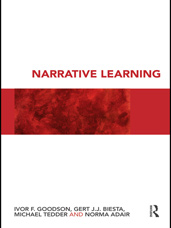Narrative Learning
Towards a Theory of Narrative Learning
Richard Hoggart has written autobiographically about his own impulse, his own ‘push for meaning outside the day to day’ (Hoggart 1958: 89), which he sees as a capacity to theorize and elaborate alternative imagined futures. His work refers back to the ossified class structures of his youth when working class solidarities were appreciable and appreciated. In his world descriptive narration was viewed as the predominant working class modality, although his own autobiography warns against over generalisation. Hoggart writes:
Almost all working class people have been used to living as subject to merely successive events. If the assault has a pattern it is that of birth and growth and death, it is that of seasons and main dates of the year and of weekly wage packet. Working class life has long been dominated by the thisnesss of things and events and people; an unordered thisness. (...) What almost all working class life – almost all levels of life – avoids, or, better, is unaware of, is intellectual pattern-making, generalized across and about habits in space and time, and so of gathering such generalisations together and hazarding judgements. To generalize about them is strange and can be disconcerting. (ibid: 213-214)
Joe Bageant has produced a similar insider account of white working class folk knowledge in the USA. He says:
My people don’t cite real facts they recite what they have absorbed from the atmosphere. Theirs is an intellectual life consisting of things that sound right, a blend of modern folk wisdom, cliché, talk radio and Christian radio babble. (Bageant 2007: 9)
In scrutinising our data, we have not specifically attributed narrative description collectively or individually to working class participants. As a characterisation of descriptive narratives Hoggart and Bageant capture some of what we have found about the learning potential of such narratives, but we do not wish to discern a monolithic pattern of social class attribution. Descriptive narratives can work with the grain of social scripting and in those cases such narratives tend not to move systematically beyond such scripting. But as we have seen, description is a narrative form that works through personal variation, for whilst some accept their initial given script, others move between scripts. Fluidity, social mobility, social movement and flexibility of response are thereby also found in descriptive narratives. Hence forms of narrativity whilst they may be socially patterned are always personally inscribed. To understand the social then, we also must always pursue the personal and must take personal stories seriously in their own terms and not just as the expression of something underlying or overarching (see also Biesta in press). This, above all, is why we have provided personal portrayals as the starting point for any conceptualisation of narrative learning.
